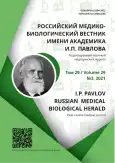Experience of using scleroobliteration in venous angiodysplasia (results of 12-month follow-up)
- Authors: Sapelkin S.V.1, Druzhinina N.A.1, Kharazov A.F.1, Chupin A.V.1
-
Affiliations:
- Vishnevsky National Medical State Center of Surgery
- Issue: Vol 29, No 3 (2021)
- Pages: 410-418
- Section: Original study
- URL: https://journals.rcsi.science/pavlovj/article/view/62354
- DOI: https://doi.org/10.17816/PAVLOVJ62354
- ID: 62354
Cite item
Abstract
AIM: To evaluate the results of using the minimally-invasive technique of scleroobliteration in patients with venous malformations.
MATERIALS AND METHODS: From 2006 to 2020, 41 interventions were performed for venous-cavernous angiomatosis of various localization through scleroobliteration. Nineteen patients (46.3%) underwent complex treatment, which included a combination of this minimally-invasive technique with other surgical interventions (resection of angiomatous tissues, laser coagulation, and radiofrequency obliteration).
RESULTS: Clinical improvement was achieved in 38 (92.7%) patients. According to the data of ultrasound control, 25 patients (61%) experienced no blood flow in the obliteration zone, and there was regression of the initial symptoms within 1 year of observation following intervention. The results of treatment were better due to the local spread of the angiomatous process. With diffuse forms, it was not possible to achieve a positive effect in 3 patients (11.1%).
CONCLUSION: Scleroobliteration can provide a positive result in the treatment of patients with venous-cavernous angiodysplasia, both as an independent method and in combination with other minimally-invasive techniques.
Full Text
##article.viewOnOriginalSite##About the authors
Sergey V. Sapelkin
Vishnevsky National Medical State Center of Surgery
Email: ssapelkin@yandex.ru
ORCID iD: 0000-0003-3610-8382
SPIN-code: 3040-0699
д.м.н, ведущий научный сотрудник отделения сосудистой хирургии ФГБУ «Национальный медицинский исследовательский центр хирургии имени А.В.Вишневского»
Russian Federation, MoscowNatal'ya A. Druzhinina
Vishnevsky National Medical State Center of Surgery
Email: dna13@mail.ru
ORCID iD: 0000-0002-6994-7310
SPIN-code: 9124-0358
ResearcherId: ABG-9603-2020
Junior Researcher
Russian Federation, MoscowAlexander F. Kharazov
Vishnevsky National Medical State Center of Surgery
Email: harazik@mail.ru
ORCID iD: 0000-0002-6252-2459
SPIN-code: 5239-8127
ResearcherId: Q-8901-2018
MD, PhD, Associate Professor of the Department of Vascular and X-Ray Endovascular Surgery; Senior Researcher of the Vascular Surgery Departmen
Russian Federation, 2/1, Barrikadnaya st., Moscow, 125993;Andrey V. Chupin
Vishnevsky National Medical State Center of Surgery
Author for correspondence.
Email: dna13@mail.ru
ORCID iD: 0000-0002-5216-9970
SPIN-code: 7237-4582
д.м.н., заведующий отделением сосудистой хирургии
Russian Federation, MoscowReferences
- Sapelkin SV, Druzhinina NA, Chupin AV, et al. Radiofrequency obliteration in treatment of venous angiodysplasia. I. P. Pavlov Russian Medical Biological Herald. 2021;29(1):89–98. (In Russ). doi: 10.23888/PAVLOVJ202129189-98
- Mulliken JB, Glowacki J. Hemangiomas and vascular malformations in infants and children: a classification based on endothelial characteristics. Plastic and Reconstructive Surgery. 1982;69(3):412–22. doi: 10.1097/00006534-198203000-00002
- Finn MC, Glowacki J, Mulliken JB. Congenital vascular lesions: clinical application of a new classification. Journal of Pediatric Surgery. 1983;18(6):894–900. doi: 10.1016/s0022-3468(83)80043-8
- Lee BB, Kim DI, Kim HH, et al. New experiences with absolute ethanol sclerotherapy in the management of a complex form of congenital venous malformation. Journal of Vascular Surgery. 2001;33(4):764–72. doi: 10.1067/mva.2001.112209
- Fishman SJ, Mulliken JB. Vascular anomalies. A primer for pediatricians. Pediatric Clinics of North America. 1998;45(6):1455–77. doi: 10.1016/s0031-3955(05)70099-7
- Park HS, Do YS, Park KB, et al. Clinical outcome and predictors of treatment response in foam sodium tetradecyl sulfate sclerotherapy of venous malformations. European Radiology. 2016;26(5):1301–10. doi: 10.1007/s00330-015-3931-9
- Ahmad S. Efficacy of Percutaneous Sclerotherapy in Low Flow Venous Malformations — a Single Center Series. Neurointervention. 2019;14(1): 53–60. doi: 10.5469/neuroint.2019.00024
- Kumar S, Bhavana K, Sinha AK, et al. Image-Guided Percutaneous Injection Sclerotherapy of Venous Malformations. SN Comprehensive Clinical Medicine. 2020;2:1462–90. doi: 10.1007/s42399-020-00412-y
- Chen RJ, Vrazas JI, Penington AJ. Surgical Management of Intramuscular Venous Malformations. Journal of Pediatric Orthopaedics. 2021;41(1):e67–e73. doi: 10.1097/BPO.0000000000001667
- Zhang J, Li H-B, Zhou SY, et al. Comparison between absolute ethanol and bleomycin for the treatment of venous malformation in children. Experimental and Therapeutic Medicine. 2013;6(2):305–9. doi: 10.3892/etm.2013.1144
- Su L, Fan X, Zheng L, et al. Absolute ethanol sclerotherapy for venous malformations in the face and neck. Journal of Oral and Maxillofacial Surgery. 2010;68(7):1622–7. doi: 10.1016/j.joms.2009.07.094
- Spence J, Krings T, TerBrugge KG, et al. Percutaneous treatment of facial venous malformations: a matched comparison of alcohol and bleomycin sclerotherapy. Head & Neck. 2011;33(1):125–30. doi: 10.1002/hed.21410
- Parsi K, Exner T, Connor D, et al. Letter: A Convenient Source of Carbon Dioxide for Sclerosant Foams. Dermatologic Surgery. 2006;32(12):1533–4. doi: 10.1111/j.1524-4725.2006.32370.x
- Cavezzi A, Flullini A, Ricci S, et al. Treatment of varicose veins by foam sclerotherapy: two clinical series. Phlebology. 2002;17(1):13–8. doi: 10.1007/BF02667958
- Parsi K, Exner T, Connor D, et al. The lytic effects of detergent sclerosants on erythrocytes, platelets, endothelial cells and microparticles are attenuated by albumin and other plasma components in vitro. European Journal of Vascular and Endovascular Surgery. 2008;36(2):216–23. doi: 10.1016/j.ejvs.2008.03.001
- Watkins MR. Deactivation of sodium tetradecyl sulphate injection by blood proteins. European Journal of Vascular and Endovascular Surgery. 2011;41(4):521–5. doi: 10.1016/j.ejvs.2010.12.012
- Tessari L, Izzo M, Kavezzi A, et al. Timing and modality of the sclerosing agents binding to the human proteins: laboratory analysis and clinical evidences. Veins and Lymphatics. 2014;3(1):3275. doi: 10.4081/vl.2014.3275
- Connor D, Cooley-Andrade O, Goh WX, et al. Detergent sclerosants are deactivated and consumed by circulating blood cells. European Journal of Vascular and Endovascular Surgery. 2015;49(4):426–31. doi: 10.1016/j.ejvs.2014.12.029
- Lee BB, Gloviczki P, Blei F, editors. Vascular Malformations: Advances and Controversies in Contemporary Management. CRC Press; 2020. P. 166.
- Star P, Connor D, Parsi K. Novel developments in foam sclerotherapy: Focus on Varithena®(polidocanol endovenous microfoam) in the management of varicose veins. Phlebology. 2018;33(3):150–62. doi: 10.1177/0268355516687864
Supplementary files










